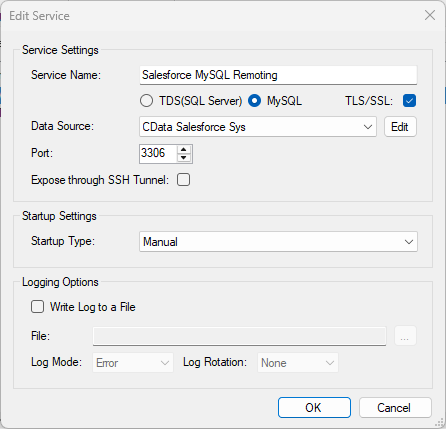Model Context Protocol (MCP) finally gives AI models a way to access the business data needed to make them really useful at work. CData MCP Servers have the depth and performance to make sure AI has access to all of the answers.
Try them now for free →Query GraphQL Data as a MySQL Database in Node.js
Execute MySQL queries against GraphQL data from Node.js.
You can use the SQL Gateway from the ODBC Driver for GraphQL to query GraphQL data through a MySQL interface. Follow the procedure below to start the MySQL remoting service of the SQL Gateway and start querying using Node.js.
Connect to GraphQL Data
If you have not already done so, provide values for the required connection properties in the data source name (DSN). You can use the built-in Microsoft ODBC Data Source Administrator to configure the DSN. This is also the last step of the driver installation. See the "Getting Started" chapter in the help documentation for a guide to using the Microsoft ODBC Data Source Administrator to create and configure a DSN.
You must specify the URL of the GraphQL service. The driver supports two types of authentication:
- Basic: Set AuthScheme to Basic. You must specify the User and Password of the GraphQL service.
- OAuth 1.0 & 2.0: Take a look at the OAuth section in the Help documentation for detailed instructions.
Configure the SQL Gateway
See the SQL Gateway Overview to set up connectivity to GraphQL data as a virtual MySQL database. You will configure a MySQL remoting service that listens for MySQL requests from clients. The service can be configured in the SQL Gateway UI.

Query GraphQL from Node.js
The following example shows how to define a connection and execute queries to GraphQL with the mysql module. You will need the following information:
- Host name or address, and port: The machine and port where the MySQL remoting service is listening for MySQL connections.
- Username and password: The username and password of a user you authorized on the Users tab of the SQL Gateway.
- Database name: The DSN you configured for the MySQL remoting service.
Connect to GraphQL data and start executing queries with the code below:
var mysql = require('mysql');
var connection = mysql.createConnection({
host : 'localhost',
database : 'CData GraphQL Sys',
port : '3306',
user : 'mysql_user',
password : 'test'
});
connection.connect();
connection.query('SELECT * FROM Users', function(err, rows, fields) {
if (err) throw err;
console.log(rows);
});
connection.end();

